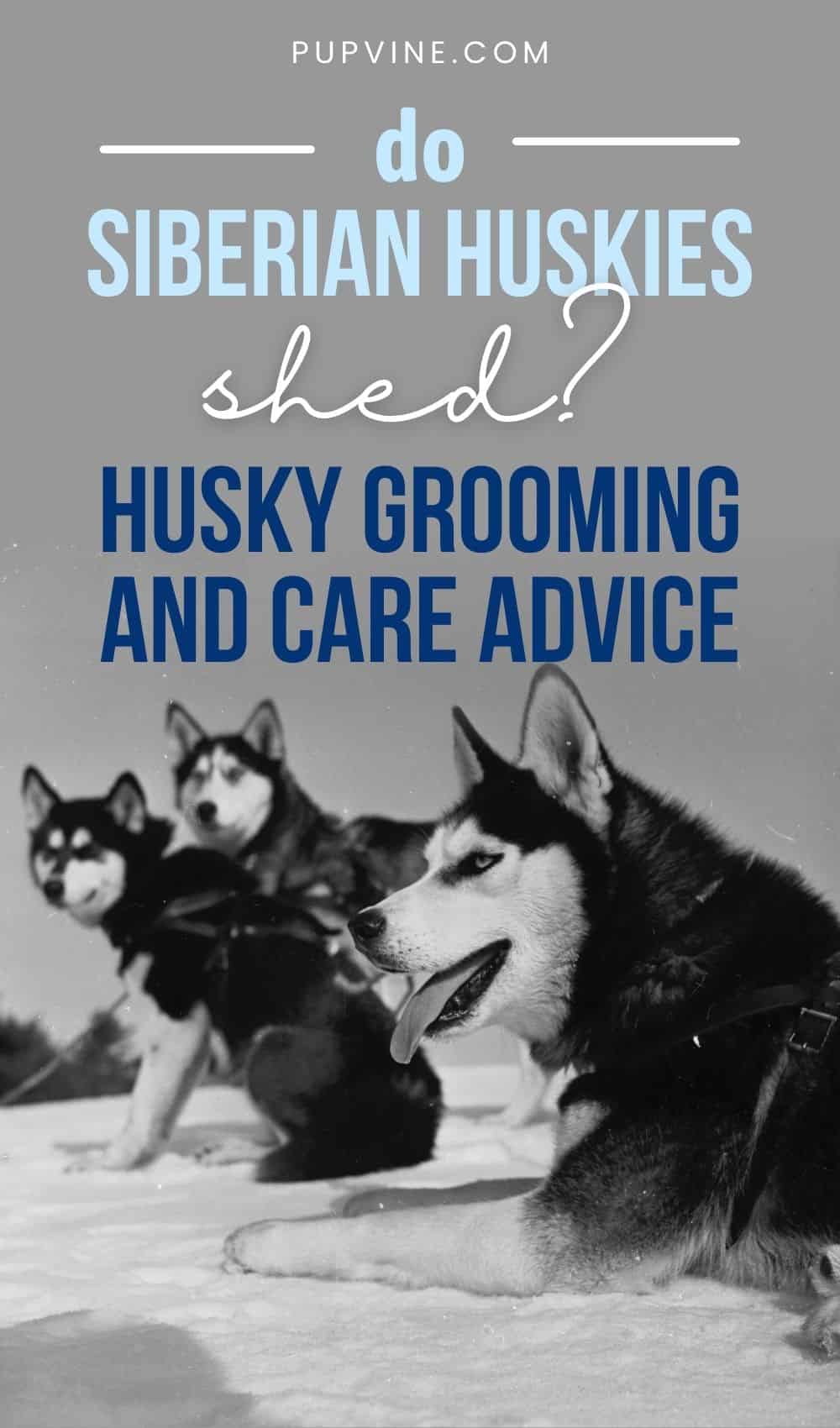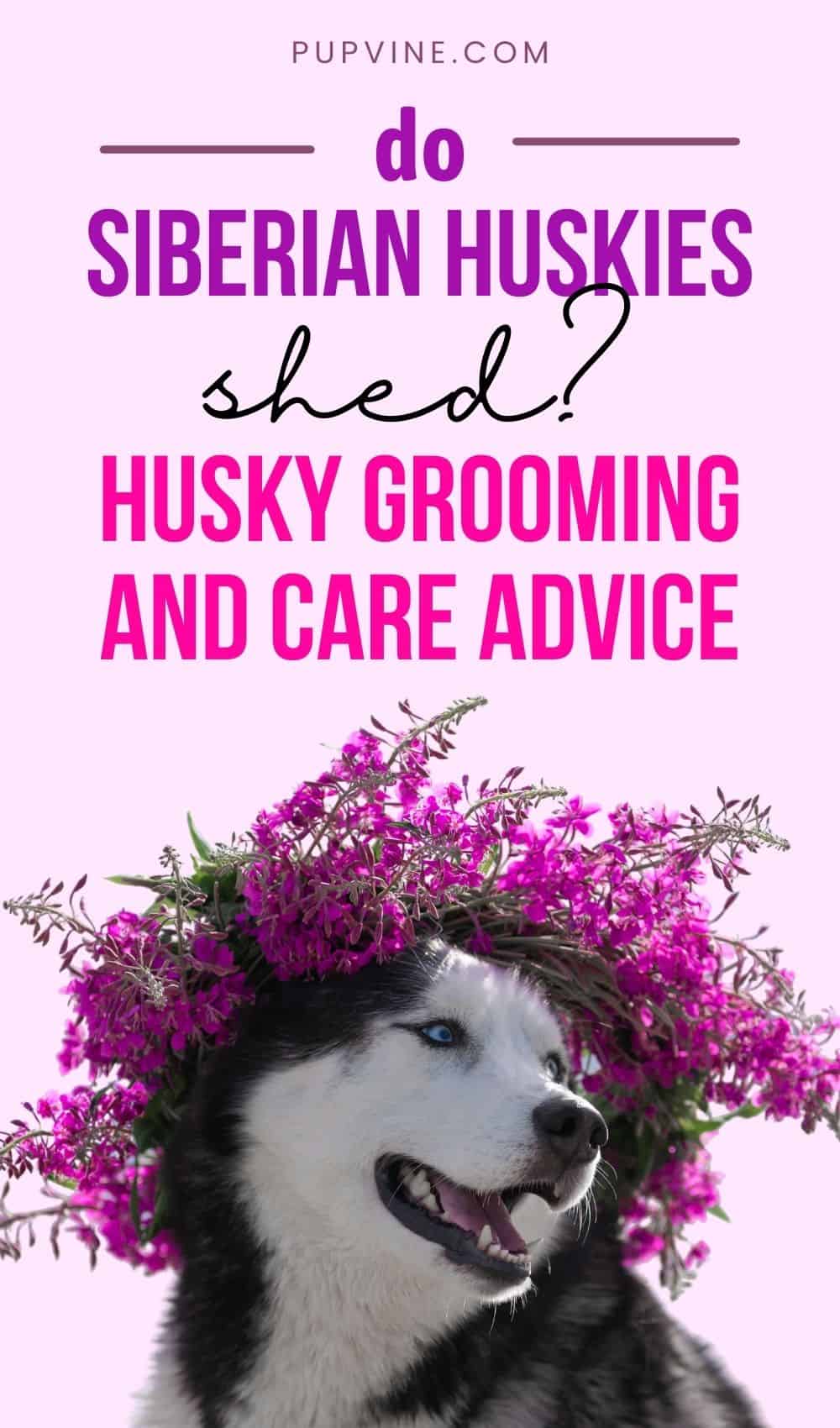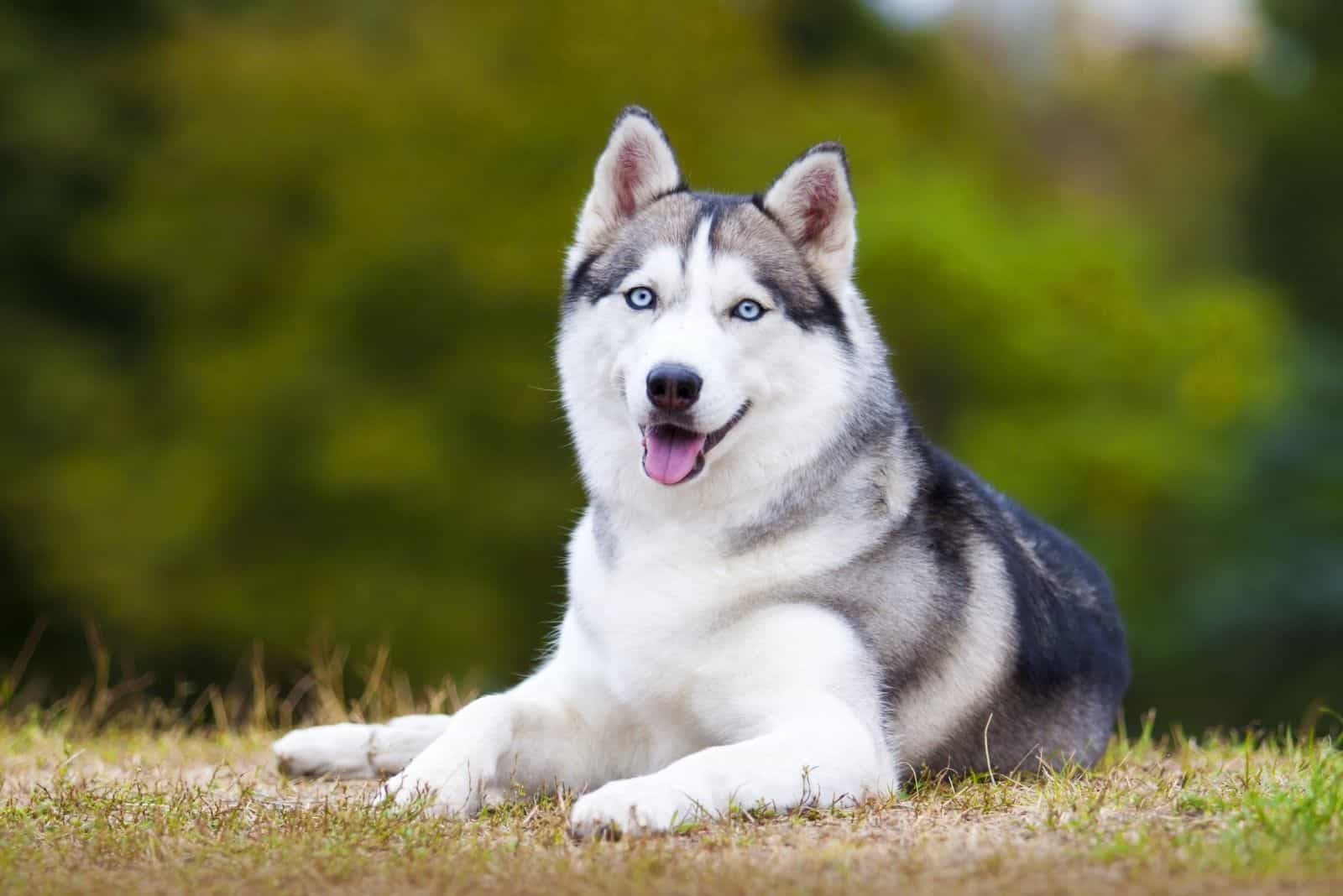Whether you’re considering getting yourself a Husky or have jumped straight in and gotten yourself one, you might have a few questions, one of which might be, Do Siberian Huskies shed? The answer is 100% yes, they do – a lot!
Unless you have one of those rare, hairless dog breeds, every dog sheds to some extent, although the amount varies from breed to breed.
Because dogs shed at different rates and their coats differ in length, type, and density, each breed has its own grooming needs and requirements.
This guide is designed to give you all the information you need about Siberian Husky shedding, along with some advice on grooming and care. It’s fair to say that you’re going to need it!
Don’t despair; by the end of this article, you’ll be better prepared to deal with the challenges.
We’ll begin by taking a close-up look at the Husky’s coat.
What Type Of Coat Do Huskies Have?
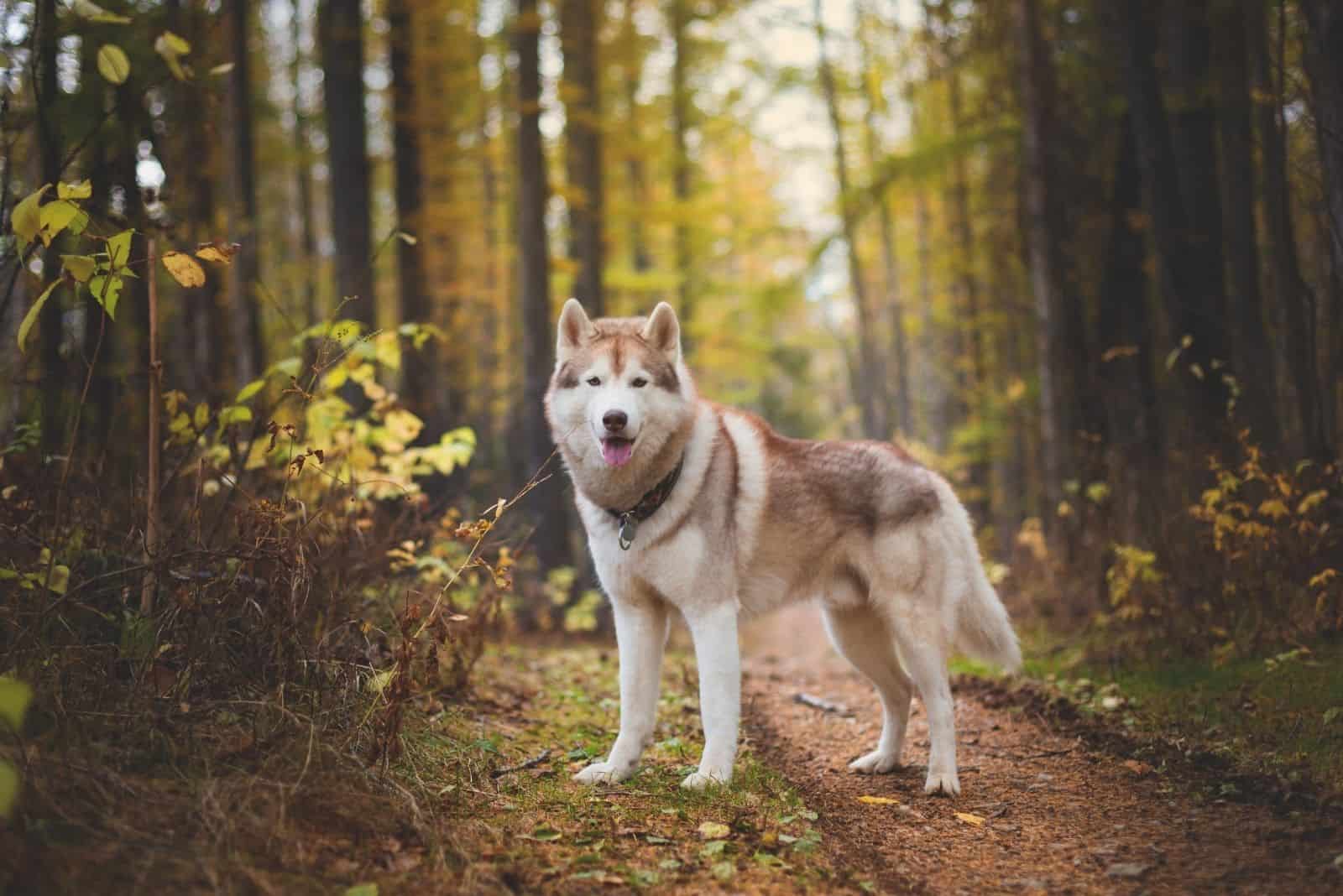
As these are sled dogs, you might guess that they’d be adapted to the cold weather conditions of Siberia. They have a thick coat that forms an effective barrier against icy winds and blizzards.
These amazing dogs are able to curl up in the snow and survive in temperatures that would kill a human in a matter of hours.
That’s all well and good for working dogs in cold climates, but it’s a different story when they move further south.
You see, this beautiful coat that suits sub-zero temperatures very well doesn’t do so well in warmer climates and centrally-heated homes.
Huskies have a double-coat comprising a topcoat of coarse hair and a thick, furry undercoat. The outer coat consists of guard hairs that provide protection from the snow and biting Arctic winds, and it also keeps the skin dry.
It also reflects UV rays, as the Husky’s skin has almost zero pigmentation, and therefore, is vulnerable to sunburn. Their undercoat is a thick layer of insulation, keeping the dog warm as toast, even in the coldest conditions.
Transport this dog to a home that’s well above freezing for most of the year, and their coat will behave differently.
How Often Do Siberian Huskies Shed?
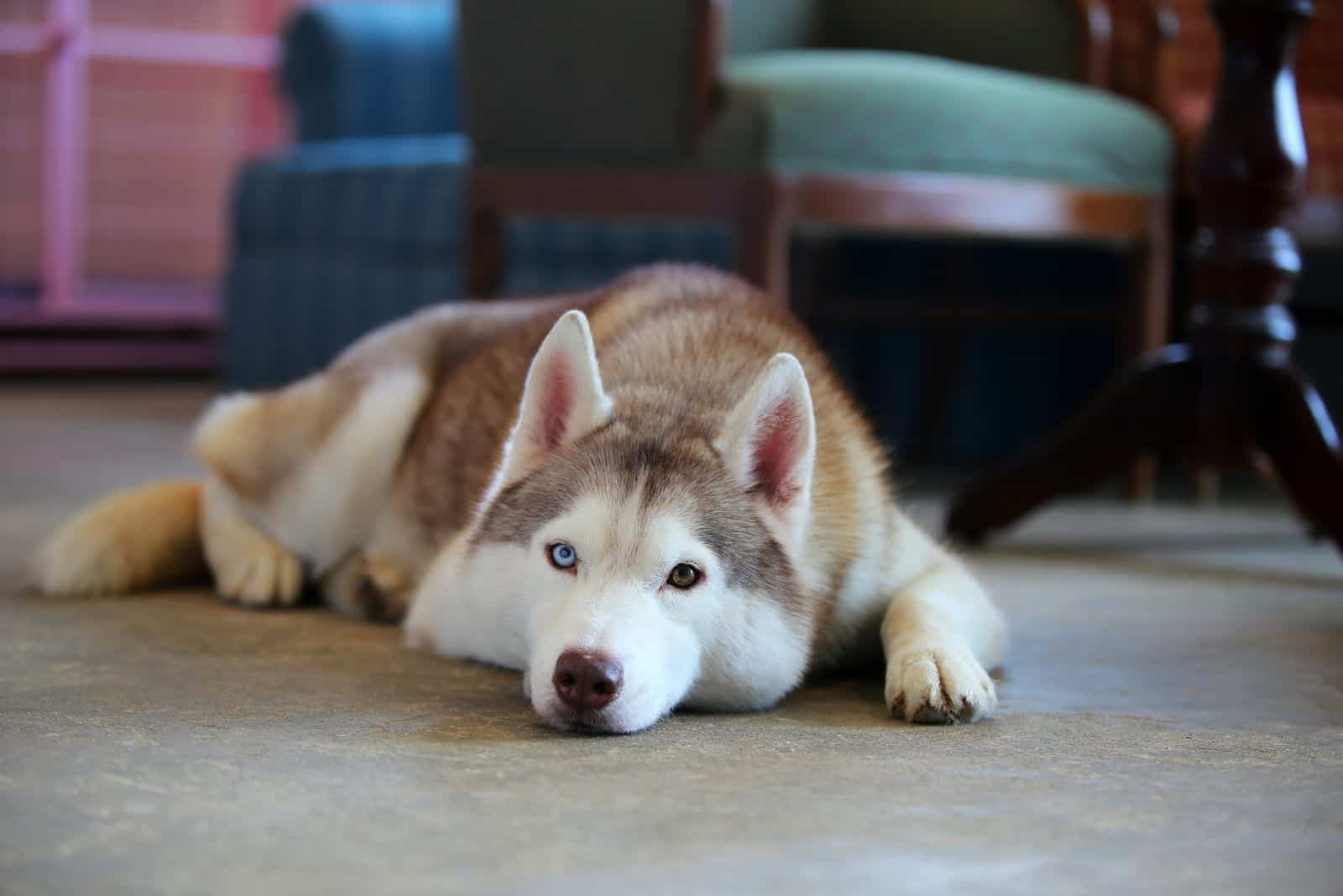
It’s tempting to write the words, all the time, here! Really, they shed year-round non-stop.
They blow their coat twice a year on top of this (explained in more detail in the next section), but you won’t catch much of a break on the amount of hair they drop, whatever the season.
This is more the case in warmer climates. In their usual, Arctic habitat, they will usually only shed twice a year. When they grow their winter coat, their furry undercoat gets thicker.
In the spring, they prepare their summer coat and all that loose fur falls away.
Drier and warmer climates cause the hair to fall any time of the year, with the two shedding seasons on top of this.
How often do Siberian Huskies shed? They never really stop shedding!
You might read blogs where Husky owners say otherwise, claiming that their own pooch only sheds profusely twice a year and is no problem the rest of the time. Maybe, they’re just lucky?
Maybe, they don’t have a true Husky? Perhaps they live in a cooler climate, or don’t need to use their central heating as much?
Whatever the reason, most Husky owners out there will attest to the fact that they are heavy shedders all throughout the year.
What Months Do Huskies Shed?
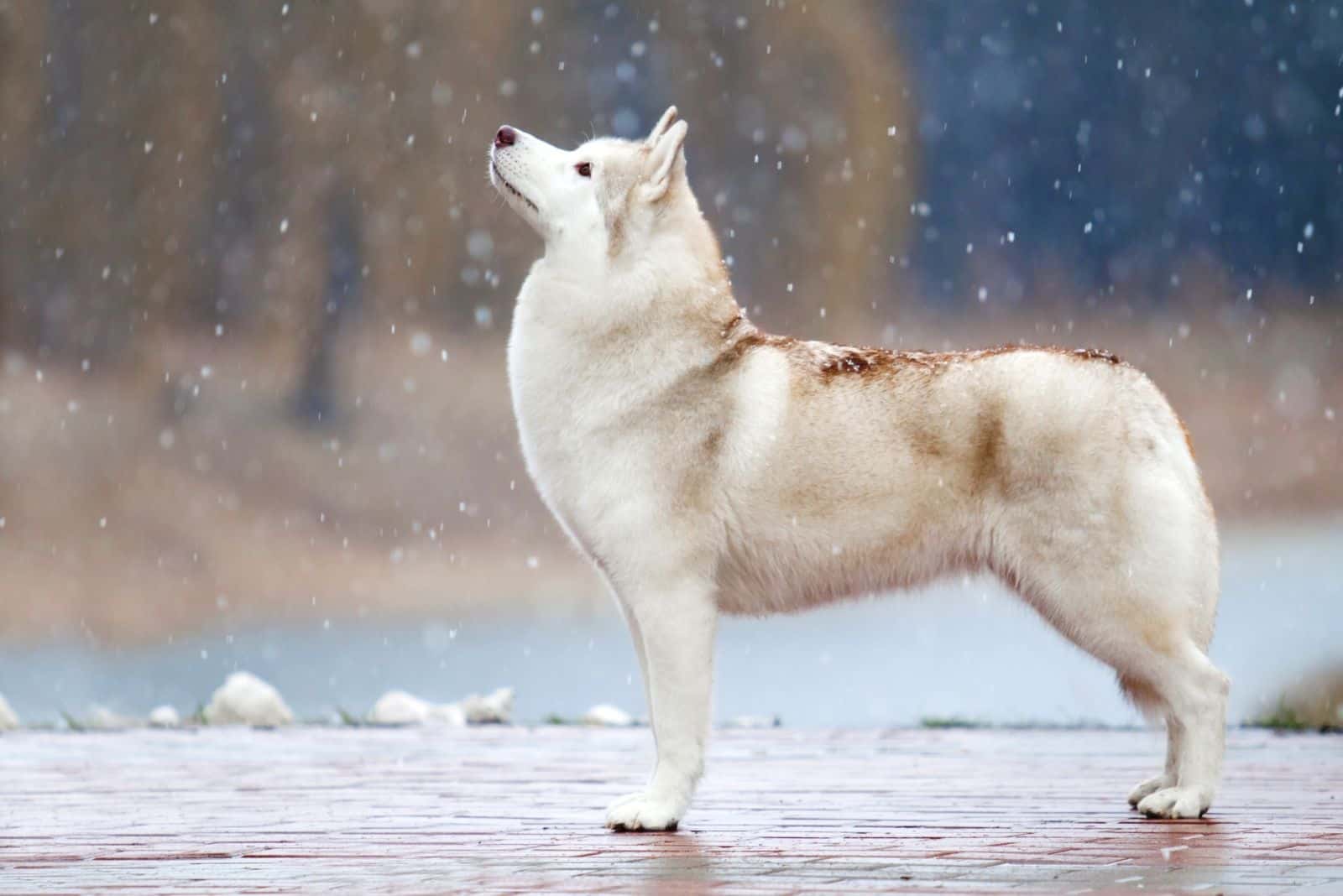
All of them! But, a more in-depth answer depends on where you live and whether you took on board what was mentioned in the previous section. Basically, some dog breeds tend to shed more in spring and fall.
There’s a common misconception that it’s triggered by fluctuating temperatures or even the simple fact that the season has changed.
In fact, scientists now believe that it’s the changing daylight levels that causes the dog’s coat to prepare itself either for the warmer weather or for the cold months ahead.
So, for Husky owners in the USA and most of the northern hemisphere, spring will be between March and the beginning of June. Fall will start at the beginning of September and run through the end of November.
These two shedding seasons can last for up to six weeks. Let’s be clear, though: shedding isn’t limited to these seasons; it’s just that the usual amount of hair will increase dramatically during these times.
The warmer it is where you live, the heavier the shedding will be as you approach summer. First-time Husky owners are often astonished at the volume of hair that blows from their dog.
This is especially so in spring when they lose the soft, furry undercoat made from fine strands that seem to get everywhere.
So, do Siberian Huskies shed all year round? Yes, but more so in spring and fall.
Do Huskies Ever Stop Shedding?
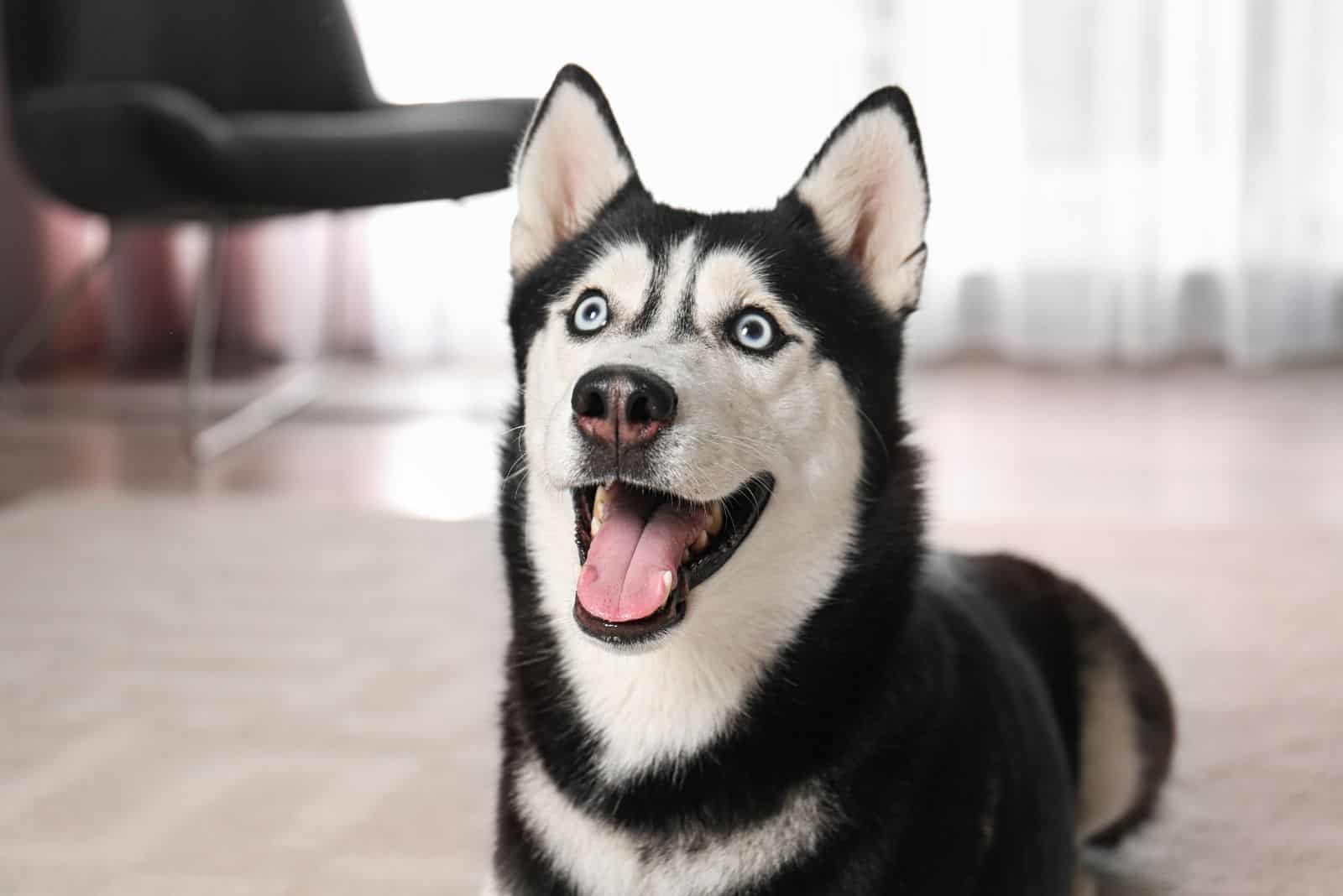
You can almost feel the desperation from Husky owners – ‘Please! Do they ever stop shedding?‘
There’s no easy way to say this… No, they don’t.
Huskies are known for two things: howling and shedding.
Okay, that’s a little unfair! They’re also known to be playful and fun-loving. They are super-loyal and loving, great with kids, and make excellent hiking companions.
If you’re part of an active family who loves the great outdoors, then a Husky will make the perfect companion.
They usually accept other dogs, and are unique in the sense that they are happy to accept strangers.
Seriously, they make the worst guard dogs! But, they are brilliant dogs if you are willing to invest the time and energy in their training and care.
However, back to shedding. The Husky has a lot going for it, but excessive shedding can be a stumbling block for some people, especially those with allergies or who are particularly house-proud.
If you love Huskies but hate dog hair, then you’re faced with a dilemma. It will all come down to whether you are prepared to put effort into a grooming routine.
You also need to invest in the tools and equipment to keep your home relatively hair-free.
Why Do Siberian Huskies Shed So Much?
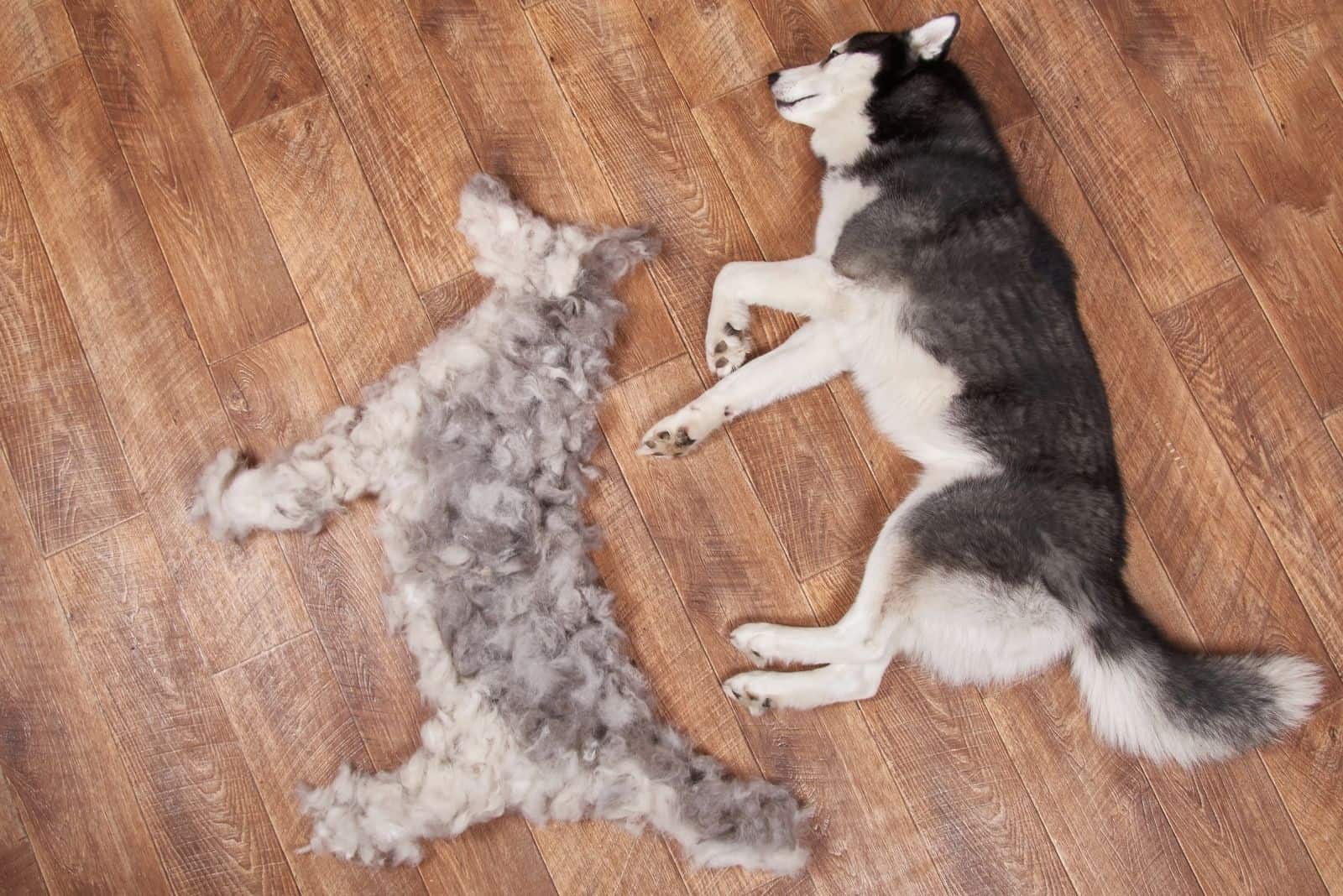
Again, we need to look north for the answer. Huskies have a thick coat made for Arctic winters, not for temperate or hot climates.
We also need to remember that these are domesticated animals, descended from ancestors that lived outdoors.
Shedding hair is a natural part of life for them. They’re not doing it to spite you!
Let’s take a look at the science behind hair growth.
Dog hair goes through four stages:
• Anagen – the hairs go through a phase of active growth
• Catagen – the hairs reach their maximum length
• Telogen – there’s no active growth, but the hair is dormant and still attached
• Exogen – the shedding phase, when the dead hair detaches itself from the follicle and falls out to make way for new hair
Although scientists now suggest that changing daylight levels trigger the main shedding seasons, dogs that live in a temperate climate don’t need a thick, warm coat.
Warm weather and central heating probably speed up the lifecycle of the hair, which is why it falls out so regularly.
How Do I Stop My Husky From Shedding?
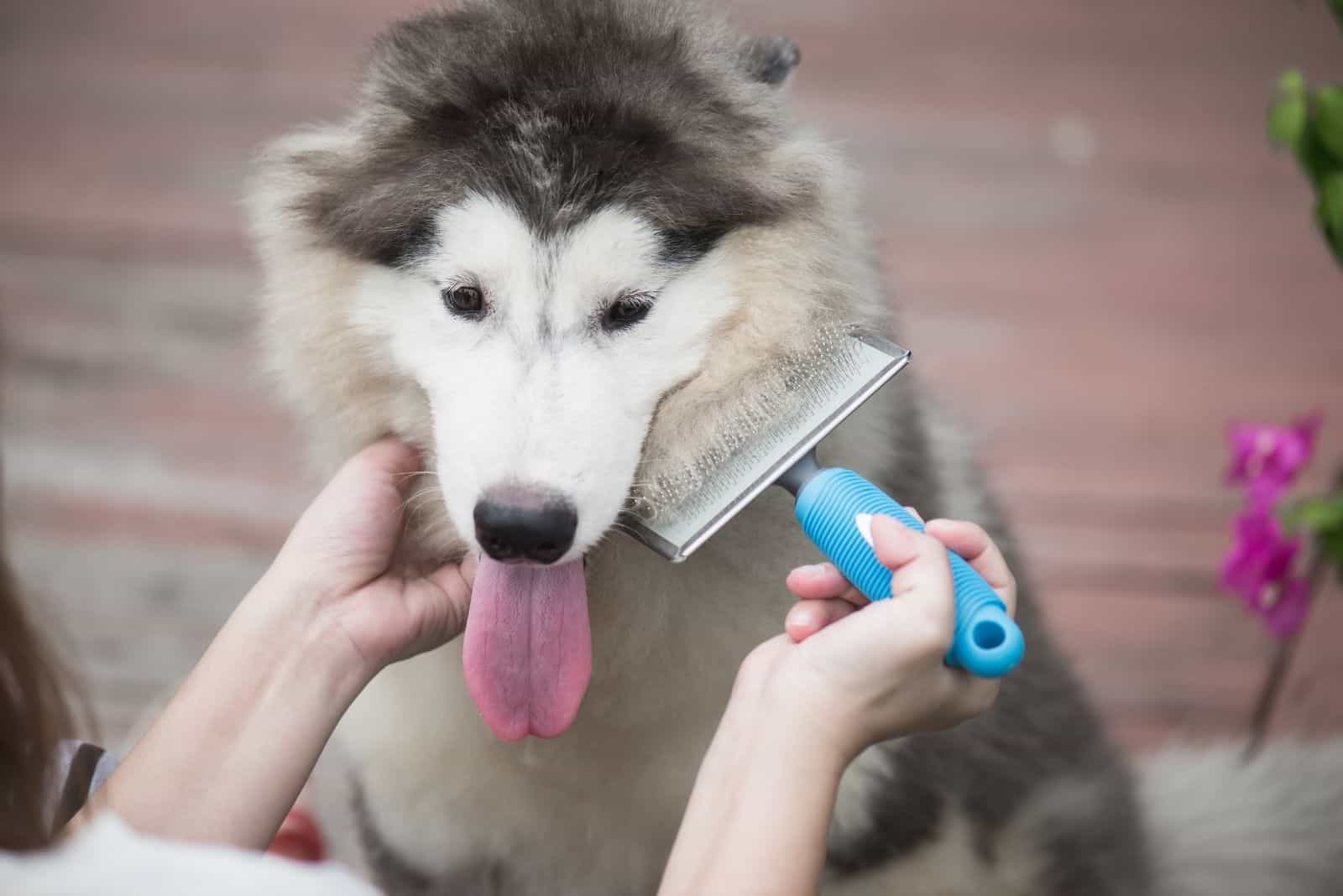
The simple truth is that you can’t. Huskies shed, just like any other dog, and you either learn to cope with Husky hair or you choose a different dog breed.
However, there are things you can do to make your life easier.
A Regular Grooming Routine
This is the number one way to cut down the volume of hair that finds its way onto your clothes and furniture.
Regular brushing is not only important in reducing the amount of hair, but it also helps to prevent matting.
Loose hair and fur can become tangled and matted, which stops the air from getting to the skin. Without this, the skin can overheat and become irritated. Bacteria can thrive in trapped dirt and dander, causing infections to spread.
You should always invest in the right equipment to do the job properly:
• An undercoat rake – This tool resembles a squeegee that you might clean your windows with, except that it has long teeth with wide spaces in between.
This allows you to get past the long guard hairs and reach the thick undercoat beneath. Pick a sturdy, robust model that will stand up to some pressure, as you’ll be putting this through its paces over the years!
• A slicker brush – Also called a pin brush, these usually have a curved or angled head with a rubber cushion in which metal pins are set.
These pins have rounded heads so they don’t scratch the skin, and are designed to pull loose, dead hairs from the coat.
• Soft towels – You’ll only need these after giving your dog a bath. Although Huskies don’t need bathing as much as some other dogs, a warm bath every now and then is a handy tool in the fight against excessive shedding.
• Small scissors – Not for clipping the coat, as this is a bad idea (more on this later!), but this is for trimming the hair on their paws. Dogs don’t have sweat glands like us.
They are found in the nose and in the paws. By trimming the hair on the paws, you’ll help the air to flow through and cool your dog down.
This might help them regulate their body temperature better, and perhaps reduce the need to lose more of their coat.
• A vacuum cleaner – You’ll need one with a bit of power, and it might be wise to invest in a model specifically designed to cope with pet hair.
In good weather, you’ll want to brush your dog outdoors, but when it’s cold and wet, you’ll probably be inside your home. This is when a good vacuum cleaner will come into its own.
• A hairdryer – This isn’t always a success with some dogs, so don’t force the issue if they protest. Many dogs are scared of the sound, but you can buy special doggy driers for the job if you feel inclined to do so.
If not, choose a quiet make of hairdryer that is less likely to spook your dog. Also, take great care that you don’t burn them!
• Good quality dog shampoo and conditioner – Keeping your dog’s coat in good condition will go a long way to reducing the amount of hair they lose.
A poor-quality shampoo will have the opposite effect, and will strip away natural oils that make the coat glossy and healthy. If you can find one, you might want to consider getting a shampoo that has an anti-shed formula.
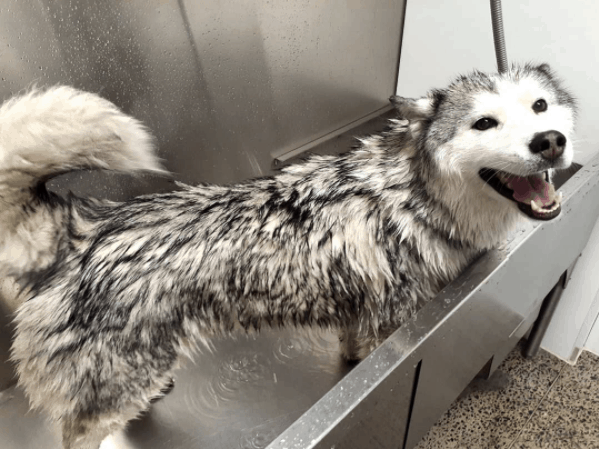
Photo from @angie_the_husky
• Dog treats – Show your dog some love for being so good! They’ll associate grooming time with getting a reward and will be more likely to cooperate.
Of course, you do have the option of using the services of a professional groomer, but this often depends on your personal circumstances and budget.
Also, there is an argument for doing this yourself as it helps to form a stronger bond between you and your furry friend.
It’s a good idea to start the grooming process when they are young in order to get them used to it.
Never be tempted to clip their whiskers, as these form an essential part of their sensing mechanism, allowing them to negotiate obstacles and sense movement.
You should aim to brush them at least once a week throughout the year, and then every day during the shedding season.
An undercoat rake might suffice for weekly brushing, but some dog owners like to use this, followed by a slicker brush, just to make sure they get all the loose hair.
In the shedding season, you’d be wise to use both every day! The whole process will take about 20 minutes, and you’ll have a mountain of hair and fur at the end. But, at least it won’t be on your furniture.
Opinions vary on products such as the Furminator, a de-shedding tool that pulls out the loose fur from the undercoat. The general consensus is that it is best for adult dogs that have both coats grown in.
If you do choose to use one, make sure you buy the right model, which is the one for long hair. You should never apply too much pressure, and don’t go over the same spot too many times.
Finally, these products aren’t suitable for a Husky puppy as they can damage its coat.
A Good Diet
A healthy dog is less likely to suffer from conditions that affect its coat. Feeding your furry pal good-quality dog food is a sure way to keep him healthy, which helps to reduce shedding.
They’ll need access to fresh, clean water, too. Dehydration will affect a dog’s coat, but it can also damage their health, even to the point of being fatal.
All this should really go without saying. Our beloved pets are our responsibility, and it’s up to us to ensure that they have the very best chance of staying healthy and happy for as long as possible.
If you notice a sudden increase in hair loss and it isn’t the shedding season, then you should consider the possibility that your pup has a food allergy.
Try changing their food and see whether this solves the problem. Your vet will be able to help you out with this.
Should I Clip Their Hair To Reduce Shedding?
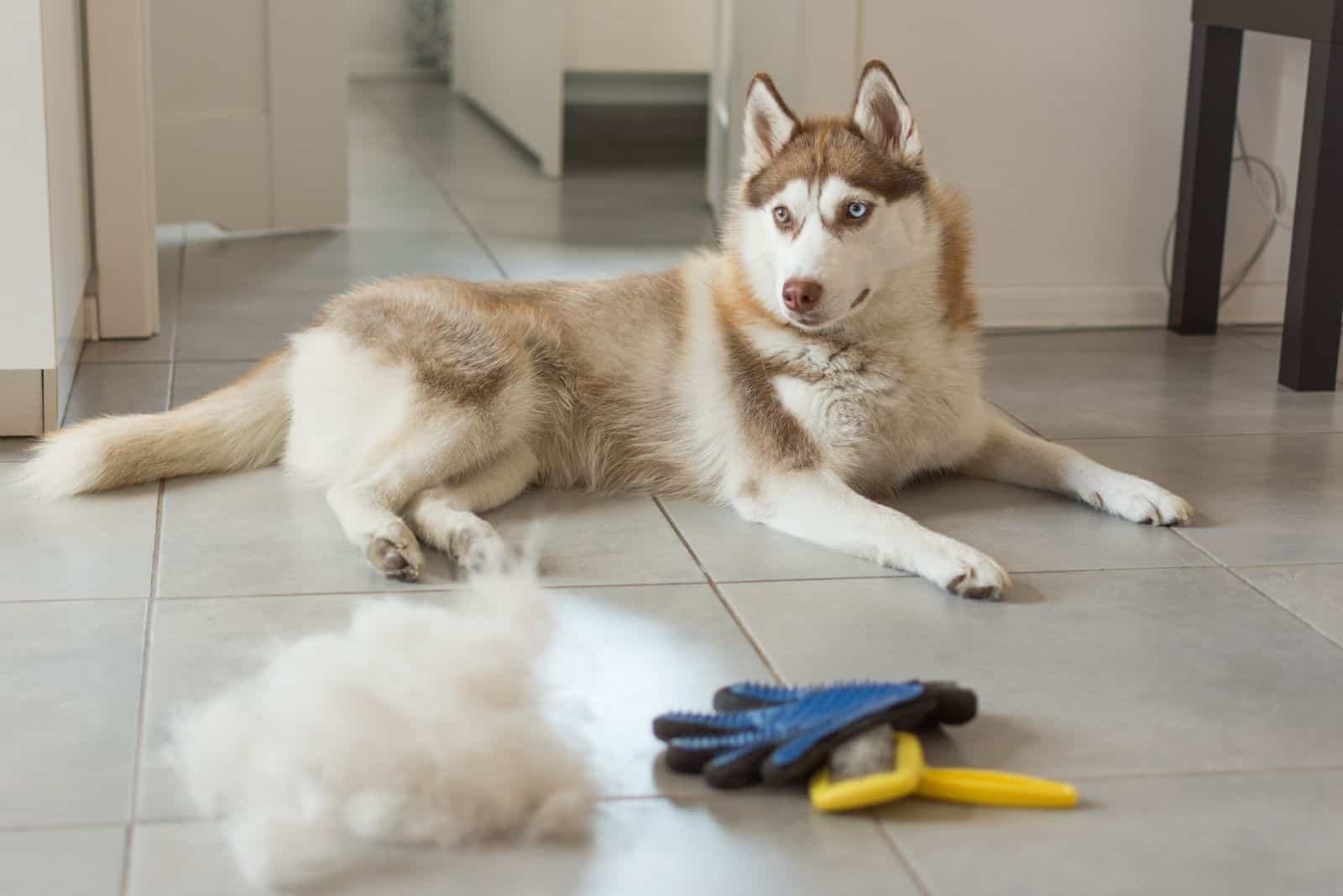
It might be tempting to do this, especially in hot weather. However, you should never clip or shave a Husky’s coat!
The only exception should be because of a medical emergency.
Clipping their coat short or, even worse, shaving it completely will take away the dog’s ability to regulate its body temperature. The double coat, though adapted to cold conditions, also helps the dog to manage in warm weather.
The guard hairs reflect the sunlight while allowing cool air to reach the skin. In summer, the dog won’t have that thick, furry undercoat, so the air can flow beneath the topcoat easily.
With a drastically shortened coat, your dog will be more at risk of overheating, heatstroke/sunstroke, and sunburn.
As mentioned above, the Husky has almost no pigmentation in its skin. Chemicals within pigmentation can help to block UV rays, but as they lack these, there’s a good chance that your dog will burn very quickly in direct sunlight.
It’s understandable to think that shaving your dog will cool it down, but this just won’t work. Dogs deal with heat differently, such as by panting and through the sweat glands in their nose and paws.
Shaving your Husky for anything (especially for fashion!) other than a medical emergency is ill-advised, unacceptable, and will be bad for their health.
What Have We Learned?
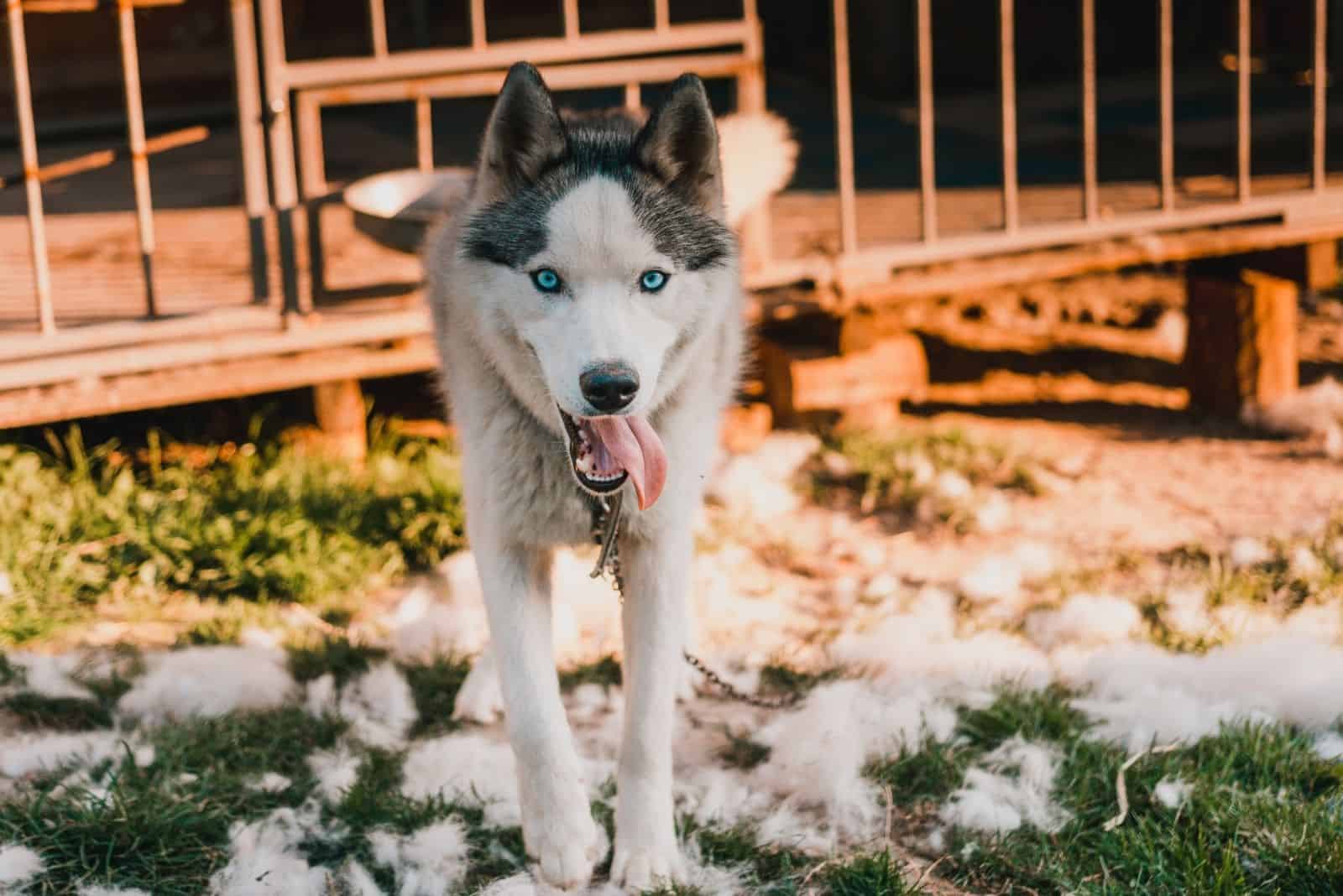
Do Siberian Huskies shed? You bet they do.
Though some Husky owners have a different experience, many will tell you that they are resigned to the fact that their precious pet will shed hair all the time, and ten times as much in spring and fall.
If you can’t handle the hair, then choose another breed. You might want to consider a crossbreed, such as a Siberian Indian Dog.
These are a cross between the Husky and the Native American Indian dog. They closely resemble the Husky in appearance, but are very low-shedders.
Then, there’s the Huskita, a Husky-Akita cross. Even though it has a dense double-coat, it requires minimum grooming, and only sheds twice a year.
However, if you want to stay with the Husky, then you’ll need to be committed to a regular grooming routine.
This means brushing at least once a week, then every day for up to six weeks at a time, twice a year. Get yourself a good vacuum cleaner, and invest in some sturdy dog brushes.
Regular brushing is the key to keeping that loose hair under control. Without it, your home will be swamped by fur, especially in spring when your dog gets rid of its winter coat!
If it all seems too much, then perhaps the Husky is not the breed for you. But, if you are prepared to take on the challenge, you’ll find that it is totally worth it.
These are magnificent dogs that are loyal, intelligent, alert, friendly, and free-spirited.
Yes, they are heavy shedders, but when you weigh it all up, the benefits of welcoming a Husky into your home far outweigh the need for extra care and grooming duties.
